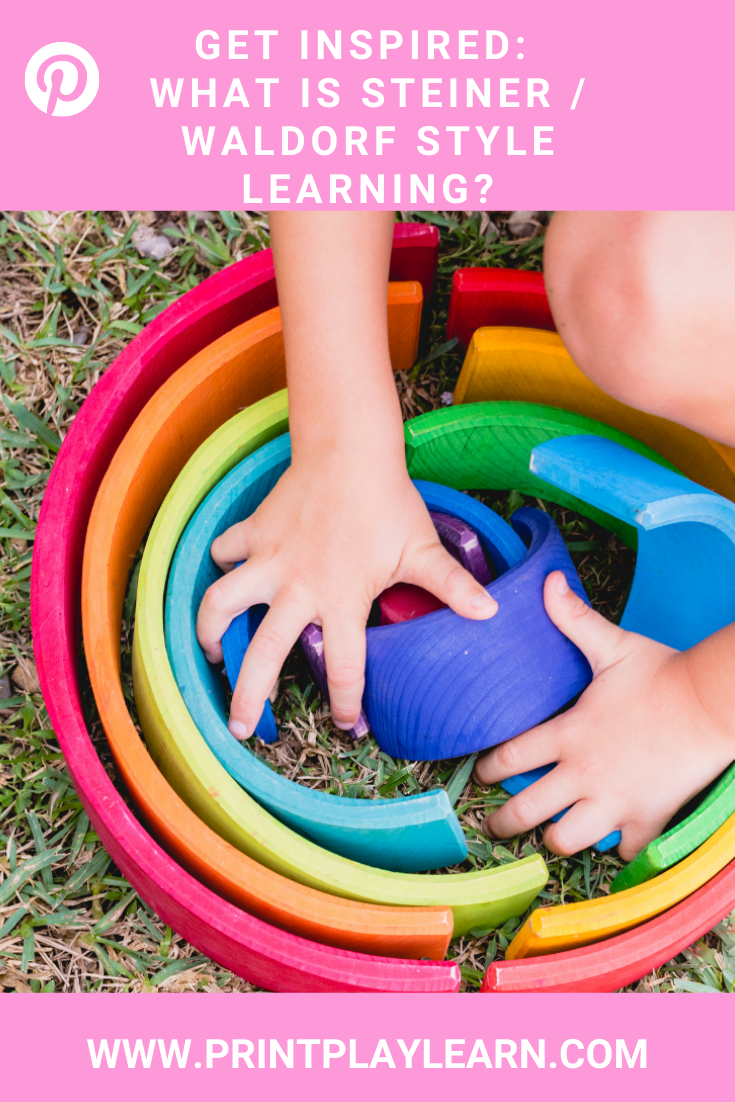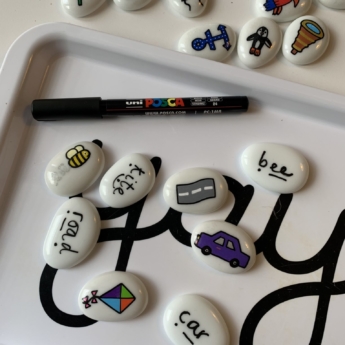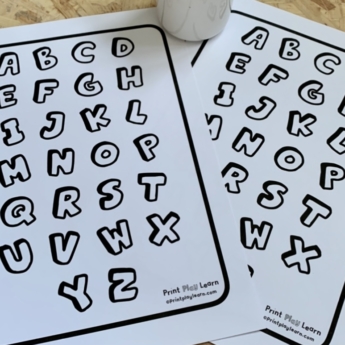What is Steiner / Waldorf Style Learning?
At Print Play Learn, I love exploring different styles of learning and seeing how we can adapt various educational philosophies to help kids thrive. Steiner (or Waldorf / Waldorf Steiner) has to be one of my favourites. Suitable for children of all ages and abilities, it’s main focus is to ensure an unhurried and creative learning environment so kids can find joy in their experiences and live childhood to the full. Goodbye academic pressure!
If you’re new to Steiner / Waldorf schooling, here’s a quick look at where it comes from and what it entails (so you can add more of it to your home school or classroom):
Where did Steiner schooling come from?
Rudolf Steiner (1861-1925) was an innovative Austrian academic, who founded the basis of Anthroposophy (‘an educational, therapeutic and creative system seeking to use mainly natural means to optimise physical & mental well-being). His ideas were applied to education, agriculture, medicine, architecture, and social reform. And it’s these ideas which influence the Steiner Waldorf Schools established today (although they may not endorse every aspect of it).
What does it look like?
- A whole child focus – taking into account the academic, physical, emotional and spiritual needs of a child – meaning it’s important learning does not jeopardise mental or overall well being
- Meeting developmental needs – Steiner educators are required to have an understanding of the different phases of child development (in 7-year cycles), so education can be tailored to be relevant and beneficial to the child as a whole
- Developing imagination is integral – which means creativity is nurtured and valued, lots of artistic activity is key!
- Encouraging curiosity – Steiner learning means encouraging a child’s inquisitive nature, not stifling it. Questions are welcomed and the aim is to raise children who are free thinkers, with their own ideas and the confidence to explore them. A great phrase to describe Steiner teaching is ‘lighting fires, not filling vessels’.
- Making experience most important – Steiner believes children learn best through hands-on experiences and doing practical tasks (not just being taught from a teacher or workbook). It’s also common to do experiments or activities before explaining why / how it works – this comes after they’ve had the experience itself.
- Teachers / parents are guides not lecturers – The aim of the educator is to show children how things are done by doing in themselves first – rather than just telling them how to do it.
- Classes stay the same between 7-14 which means the same teacher and the same peers, and can really strengthen relationships and trust in the classroom
- Feedback but not grading Steiner schools don’t do formal assessments or grading. Instead work will be marked with constructive feedback, but not labelled in any way that will make a child feel like they’ve failed.
- It’s education for mind, body, and soul – Steiner is a whole life approach, which teaches children to view the world as good and to see themselves as capable! By encouraging children to see their whole selves as valuable, they become confident in themselves as a whole and find it easy to nurture the world around them, and others.
The great thing about Steiner is that it can be combined with other styles of learning too. You could mix Steiner with unschooling or take a Steiner approach to how you run your home, even if your children go to mainstream school. Steiner / Waldorf is more of a way of looking at our kids and the way we do life with them, which we can bring to everything!
Found this useful? Why not share it with family or friends to show them how education can be done outside of traditional schooling! And if you’d like to know more about any other styles of education Let me know over on Instagram.


